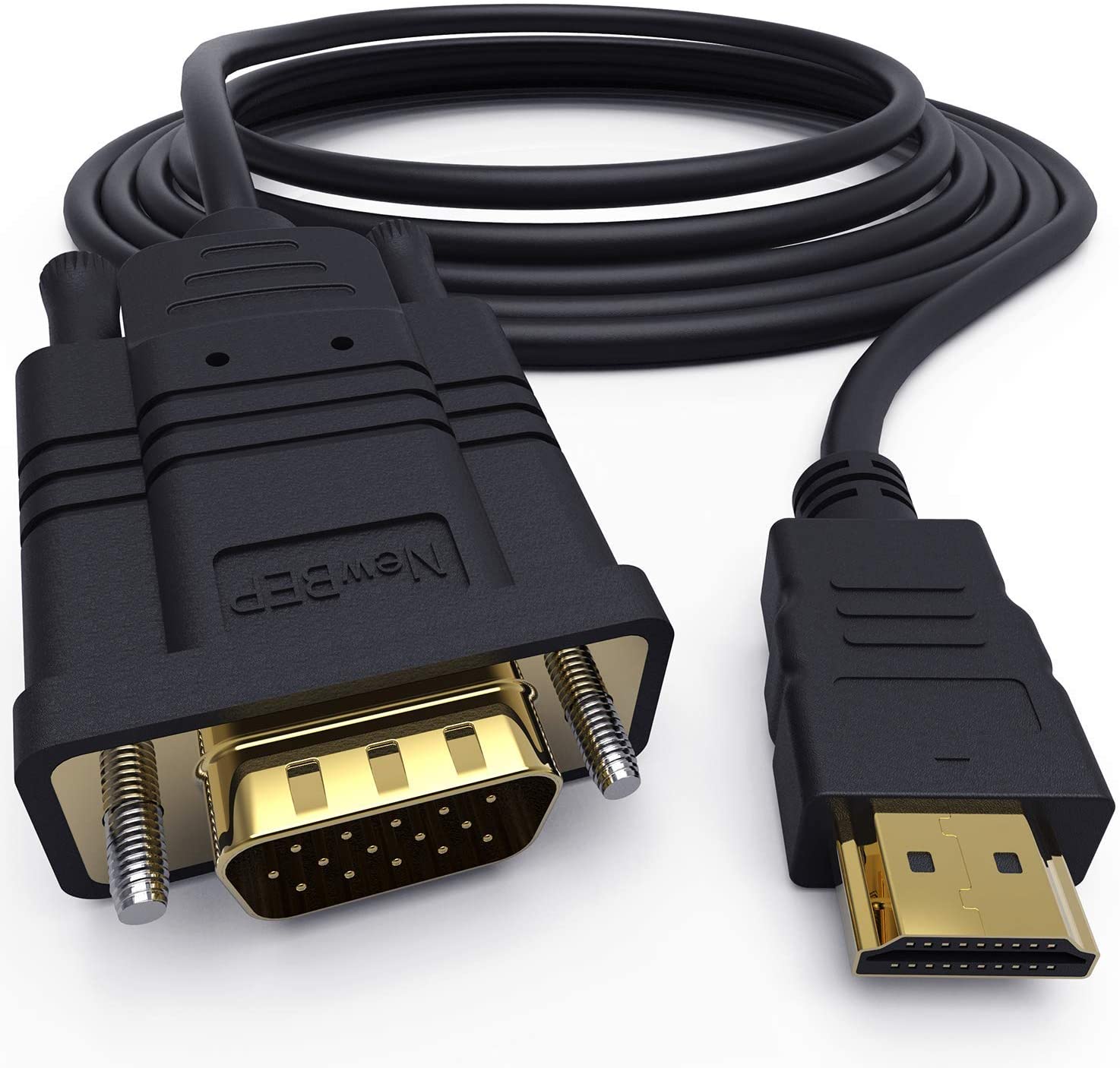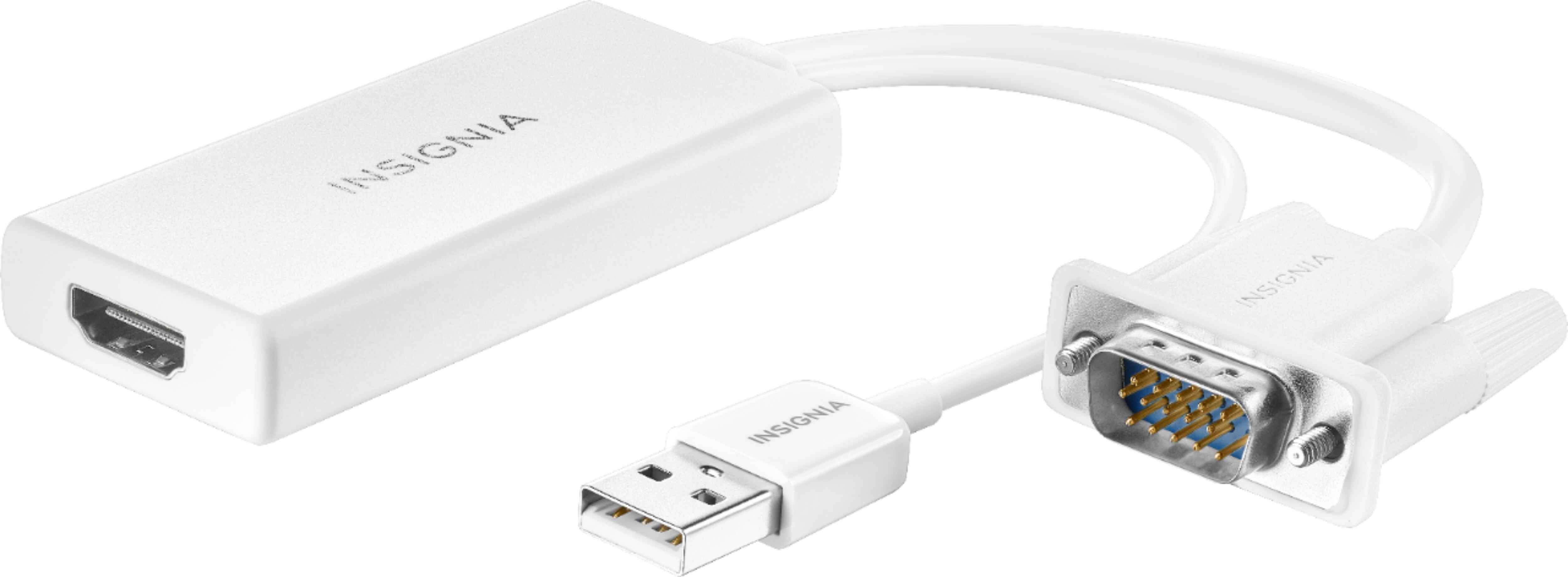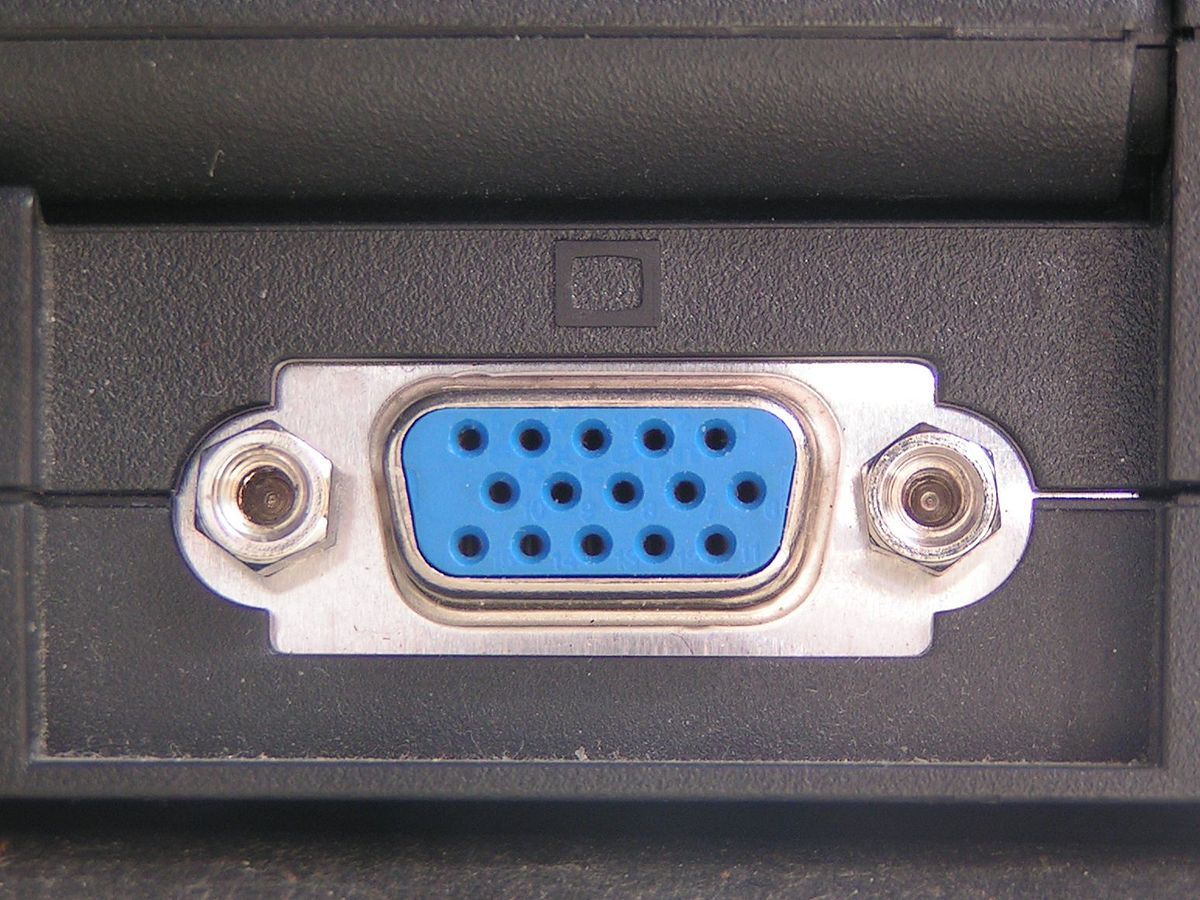Introduction
Welcome to the world of VGA monitors, the trusted display technology that has withstood the test of time. From its humble beginnings to its widespread use today, VGA monitors have become an integral part of our computing experience. In this article, we will explore the definition of VGA monitors, delve into their history, discuss how they work, highlight their advantages and disadvantages, compare them to HDMI monitors, provide tips for choosing the right VGA monitor, tackle common troubleshooting issues, and glimpse into the future of VGA monitors.
When it comes to computer displays, VGA (Video Graphics Array) is a term that most people are familiar with. VGA monitor refers to a display screen that utilizes VGA technology to render images and transmit them from a computer to the monitor. It has been the go-to connection method for video output on computers for several decades.
The history of VGA monitors dates back to the late 1980s when they were introduced as a successor to the earlier CGA (Color Graphics Adapter) and EGA (Enhanced Graphics Adapter) standards. VGA monitors quickly gained popularity due to their improved image quality and higher resolution capabilities. They became the industry standard for video output, and VGA connectors were found on almost every computer. Even with the advent of newer technologies, such as HDMI and DisplayPort, VGA monitors continue to be used in various applications, from office setups to conference rooms.
VGA monitors operate by receiving analog signals from the computer’s graphics card and converting them into visible images on the screen. The VGA cable carries separate RGB (Red, Green, Blue) signals for each pixel, allowing them to produce a wide range of colors and intricate details. While newer display technologies offer higher resolutions and digital data transmission, VGA monitors still provide satisfactory visuals for everyday tasks.
One of the significant advantages of using a VGA monitor is its compatibility with a wide range of devices. VGA is a universal connection standard, allowing it to be easily used with desktop computers, laptops, projectors, and older video equipment. Additionally, VGA cables are inexpensive and widely available, making them a cost-effective option for connecting devices.
However, VGA monitors have their limitations. The analog nature of the signal can lead to decreased image quality and potential interference compared to digital interfaces like HDMI. VGA also maxes out at a lower resolution and refresh rate compared to newer technologies, making it less suitable for graphic-intensive tasks like gaming and video editing.
Definition of VGA Monitor
A VGA monitor, also known as a Video Graphics Array monitor, is a display device that uses VGA technology to showcase images and graphics generated by a computer. The term “VGA” refers to both the display standard and the connector used to transmit the video signal between the computer and the monitor.
VGA is an analog video signal that was first introduced by IBM in 1987 as a replacement for older display standards like CGA and EGA. It quickly gained popularity and became the de facto standard for video output on personal computers. VGA monitors are equipped with a VGA port, which is a D-subminiature connector with 15 pins arranged in three rows. The VGA cable connects the computer’s graphics card to the monitor, allowing the transmission of video signals.
The VGA standard supports a resolution of 640×480 pixels and a color depth of 256 colors. However, with improvements in graphics technology, VGA monitors can display higher resolutions and color depths, such as 1024×768 pixels and millions of colors. Despite technological advancements, VGA monitors have remained in use due to their compatibility with a wide range of devices and their cost-effective nature.
One of the distinguishing features of VGA monitors is their ability to generate analog signals. The graphics card in the computer converts digital image data into analog signals, which are then transmitted through the VGA cable to the monitor. Inside the monitor, these analog signals are converted back into visible images on the screen by the monitor’s circuitry.
VGA monitors have buttons or on-screen menus that allow users to adjust various settings, including brightness, contrast, and color balance. These adjustments can help optimize the image quality based on personal preferences and the lighting conditions in the environment.
Over the years, VGA technology has been surpassed by newer digital display standards like HDMI (High-Definition Multimedia Interface) and DisplayPort. However, VGA monitors are still widely used, particularly in situations where compatibility with older devices is required, or budget constraints need to be considered.
History of VGA Monitor
The history of VGA monitors traces back to the late 1980s when IBM introduced the Video Graphics Array (VGA) standard as a successor to the Color Graphics Adapter (CGA) and Enhanced Graphics Adapter (EGA) standards. This marked a significant advancement in display technology and paved the way for the widespread use of VGA monitors in the computing world.
VGA monitors provided several notable improvements over their predecessors. They offered a higher resolution of 640×480 pixels, which was a substantial leap from the 320×200 resolution of CGA and the 640×350 resolution of EGA. This increase in resolution allowed for sharper, more detailed images on the screen.
In addition to the higher resolution, VGA monitors also supported a wider range of colors. While CGA and EGA were limited to displaying a maximum of 16 and 64 colors, respectively, VGA monitors were capable of showing 256 colors. This expanded color palette greatly enhanced the visual experience, making images and graphics appear more vibrant and lifelike.
VGA technology quickly gained popularity and became the industry standard for video output on personal computers. VGA connectors, with their distinctive 15-pin design, were found on almost every computer, and VGA monitors became widely available in various sizes and form factors.
Over the years, VGA monitors underwent further advancements and improvements. Higher resolution modes, such as 800×600 and 1024×768, were introduced to cater to the increasing demand for more detailed visuals. Manufacturers also worked on enhancing the image quality and color accuracy of VGA monitors, leading to better overall viewing experiences.
As technology continued to evolve, newer display standards such as HDMI (High-Definition Multimedia Interface) and DisplayPort emerged, offering even higher resolutions, digital signal transmission, and improved image quality. These digital interfaces started replacing VGA as the preferred choice for connecting monitors to computers.
Despite the rise of digital display technology, VGA monitors have remained in use, particularly in specific applications. Offices, schools, and other institutions often have legacy systems that still utilize VGA connections. Additionally, VGA monitors can be found in settings where compatibility with older devices is crucial, such as industrial equipment or retro gaming setups.
In recent years, VGA has been gradually phased out, with many modern devices no longer offering VGA ports. However, there are still options available for converting VGA signals to more modern digital formats, allowing VGA monitors to be used with newer devices.
The history of VGA monitors showcases their enduring popularity and significance in the realm of display technology. While newer technologies have taken the spotlight, VGA monitors have left an indelible mark on the world of computing and continue to be utilized in various ways to this day.
How Does VGA Monitor Work?
VGA monitors operate by receiving analog video signals from a computer’s graphics card and converting them into visible images on the screen. The process involves several steps that work together to produce the visual output.
When an image is generated on a computer, whether it’s a simple document, a web page, or a high-definition video, the graphics card processes the data and converts it into a series of analog signals. These signals represent the various colors and brightness levels needed to recreate the image accurately.
The VGA cable, which is equipped with a VGA connector on both ends, is then used to transmit these analog signals from the computer’s graphics card to the VGA monitor. The VGA connector has 15 pins arranged in three rows, with each pin carrying a specific signal related to the image being displayed.
Inside the VGA monitor, the analog signals are received and processed by the monitor’s circuitry. This circuitry includes components such as amplifiers, analog-to-digital converters, and digital-to-analog converters.
The amplifiers in the monitor’s circuitry boost the strength of the analog signals, ensuring that they have enough power to drive the display. This step helps to maintain signal integrity and prevent any signal degradation that may occur over long cable lengths.
Next, the analog-to-digital converters take the amplified analog signals and convert them into digital form. Digital data is easier to process and manipulate, making it more suitable for the internal workings of the monitor.
Once the analog signals have been converted into digital format, the monitor’s circuitry processes the digital data to determine the appropriate color values for each pixel on the screen. This involves mapping the digital data to the correct color palette and adjusting the brightness and contrast levels according to the user’s settings.
Finally, the digital-to-analog converters take the processed digital data and convert it back into analog signals. These analog signals are then sent to the display components of the monitor, which consist of pixels arranged in a grid format. Each pixel corresponds to a specific location on the screen and can display a specific color based on the analog signals received.
By activating the appropriate pixels and adjusting the intensity of their colors, VGA monitors are able to recreate the desired image with the correct colors, brightness levels, and details. The combination of the graphics card’s output and the monitor’s circuitry and display components work in tandem to provide a visual representation of the digital data.
Overall, VGA monitors rely on the transmission and conversion of analog signals to deliver the images and graphics generated by a computer. Despite newer digital display technologies, the longevity and continued use of VGA monitors highlight their effectiveness in providing a reliable and visually satisfactory display experience.
Advantages of VGA Monitor
VGA monitors offer several advantages that have contributed to their enduring popularity and continued use in various applications. While newer digital display technologies have emerged in recent years, VGA monitors still find their place due to the following advantages:
- Compatibility: One of the key advantages of VGA monitors is their compatibility with a wide range of devices. VGA is a universal connection standard, making it easy to connect VGA monitors to desktop computers, laptops, projectors, and even older video equipment. This compatibility ensures that VGA monitors can be utilized in diverse settings without the need for additional adapters or converters.
- Cost-effective: VGA monitors are generally more affordable compared to their digital counterparts, making them a cost-effective option for users on a budget. VGA cables, which are essential for connecting the monitor to the computer, are inexpensive and widely available. This affordability makes VGA monitors a practical choice for educational institutions, small businesses, and individuals seeking reliable display solutions without breaking the bank.
- Widespread availability: Even with the rise of newer display technologies, VGA monitors continue to be widely available in the market. This availability is beneficial for users who already have VGA-compatible devices or prefer the familiarity and reliability of VGA connections. Additionally, the abundance of VGA monitors ensures that replacements and upgrades can be easily obtained when needed.
- Legacy support: VGA monitors are ideal for situations where compatibility with older devices is crucial. Many legacy systems, such as industrial equipment or older computers, still rely on VGA connections for display output. By using VGA monitors, users can seamlessly integrate these older devices into their setups, extending their lifespan and avoiding the need for costly hardware upgrades.
- Reliability: VGA technology has stood the test of time and has proven to be a reliable display standard. VGA monitors are known for their robustness and stability, as well as their ability to transmit video signals over longer cable lengths without significant signal degradation. This reliability ensures that VGA monitors can perform consistently, making them suitable for applications where uninterrupted display functionality is critical.
While VGA monitors may not offer the same resolution, image quality, or advanced features as newer display technologies like HDMI or DisplayPort, their compatibility, affordability, and reliability continue to make them a practical choice for many users. Whether it’s for everyday office tasks, educational environments, or specific legacy applications, VGA monitors deliver a dependable and cost-effective display solution.
Disadvantages of VGA Monitor
While VGA monitors have their advantages, they also come with certain limitations and drawbacks compared to newer display technologies. It is important to consider these disadvantages when deciding whether a VGA monitor is the right choice for your specific needs:
- Limited resolution: One of the primary disadvantages of VGA monitors is their limited resolution capabilities. VGA technology was designed for a maximum resolution of 640×480 pixels, which is significantly lower compared to the higher resolutions offered by modern display standards. This limitation can result in less sharpness and detail in the displayed content, especially when working with graphics-intensive tasks, high-definition videos, or large-scale presentations.
- Analog signal degradation: VGA monitors transmit analog signals, which are more susceptible to interference and signal degradation, especially over long cable lengths. This can lead to issues such as color bleeding, ghosting, or reduced image quality. In contrast, digital display technologies like HDMI and DisplayPort transmit digital signals, which are less prone to signal degradation, ensuring better overall image quality and stability.
- Lower color depth: VGA monitors are typically limited to a color depth of 8 bits per channel, resulting in a maximum of 256 colors. This can limit the color accuracy and reproduction capabilities of VGA monitors, especially when compared to newer technologies that support millions of colors. As a result, images and videos may appear less vibrant and lifelike on VGA monitors.
- Incompatibility with newer devices: As technology advances, many newer devices—including laptops, desktop computers, and graphics cards—no longer come equipped with VGA ports. This lack of compatibility means that users may require additional adapters or converters to connect their VGA monitors to these devices, adding extra complexity and potential points of failure to the setup.
- Limitations for multimedia and gaming: VGA monitors are not ideal for multimedia playback or gaming due to their limited resolution, color depth, and analog nature. For users who require high-definition visuals, fast refresh rates, and smooth gameplay experiences, newer display technologies like HDMI or DisplayPort are more suitable choices.
While VGA monitors may not offer the same level of performance, resolution, and color accuracy as their digital counterparts, they continue to have their place in specific applications. However, it is crucial to weigh the advantages and disadvantages to determine whether a VGA monitor meets your requirements and aligns with your display needs.
VGA vs. HDMI: Comparison and Differences
When it comes to display connections, VGA (Video Graphics Array) and HDMI (High-Definition Multimedia Interface) are two commonly used standards. While VGA has been the long-standing go-to option for video output, HDMI has gained popularity for its digital audio and video capabilities. Let’s compare and explore the differences between VGA and HDMI:
- Signal Type: The most significant difference between VGA and HDMI lies in the signal type they transmit. VGA is an analog signal, while HDMI is a digital signal. Analogue signals are continuous and susceptible to interference, which can result in signal degradation and image quality issues. In contrast, digital signals are binary and less prone to interference, ensuring better image quality and stability.
- Resolution and Image Quality: HDMI supports higher resolutions compared to VGA, making it the preferred choice for high-definition content. HDMI supports resolutions up to 4K Ultra HD or even 8K, while VGA is limited to lower resolutions, typically up to 1920×1080 pixels. This difference in resolution leads to sharper and more detailed images displayed on HDMI monitors, particularly for multimedia, gaming, and other graphic-intensive applications.
- Audio Capability: HDMI carries both video and audio signals, eliminating the need for separate audio cables. This is especially beneficial for multimedia applications, as HDMI allows for seamless transmission of high-quality audio alongside video signals. In contrast, VGA only transmits video signals, requiring separate audio cables if audio output is necessary.
- Compatibility and Availability: VGA has been a widely adopted standard for many years, resulting in the availability of VGA ports on older computers, monitors, and projectors. However, VGA compatibility on newer devices is decreasing, with devices often omitting VGA ports in favor of digital connections like HDMI. HDMI, on the other hand, is the standard for newer devices and is more commonly found in modern TVs, computers, and other multimedia equipment.
- Cable Length: HDMI cables can transmit digital signals over longer distances without significant signal degradation, thanks to their built-in error correction capabilities. On the other hand, VGA cables can experience signal degradation and interference over long cable lengths, which can impact image quality. This makes HDMI more suitable for setups requiring long cable runs between the source device and the display.
- Adapter and Converter Requirement: VGA output can be easily converted to HDMI using adapters, allowing VGA monitors to be used with devices lacking VGA ports. However, the reverse—converting HDMI to VGA—can be more challenging, as it requires additional active converters, since VGA cannot process digital signals natively.
In summary, HDMI offers superior image quality, higher resolutions, audio capability, and better compatibility with newer devices compared to VGA. However, VGA still has its place in certain legacy systems and setups, offering basic video output and compatibility with older devices. When considering VGA versus HDMI, it is important to assess your specific needs, device compatibility, resolution requirements, and multimedia capabilities to make an informed decision.
Choosing the Right VGA Monitor
When it comes to selecting a VGA monitor, there are several factors to consider to ensure that you choose the right one for your needs. Here are some key points to keep in mind:
- Screen Size and Resolution: Determine the screen size and resolution that will suit your requirements. Consider factors such as desk space, viewing distance, and the type of content you will be working with. A larger screen size provides more screen real estate, while a higher resolution offers sharper and more detailed visuals.
- Image Quality: Look for a VGA monitor with good color accuracy, high contrast ratio, and wide viewing angles. Consider the panel type, such as TN (Twisted Nematic), IPS (In-Plane Switching), or VA (Vertical Alignment), as each has its own advantages and disadvantages in terms of image quality and viewing angles.
- Adjustability: Ensure that the monitor allows for tilt, swivel, and height adjustments. This will allow you to position the monitor ergonomically for comfortable viewing and reduce strain on your neck and eyes.
- Connectivity Options: Check the available ports on the VGA monitor. In addition to the VGA port, having additional connection options like DVI or DisplayPort can provide flexibility for future use or compatibility with other devices.
- Response Time: Response time refers to the speed at which pixels can change color. A lower response time is preferable for gaming and fast-paced multimedia content, as it reduces motion blur and ghosting effects.
- Energy Efficiency and Environmental Certifications: Consider energy-efficient monitors that comply with certifications such as Energy Star. These monitors consume less power, help reduce electricity costs, and have a lower environmental impact.
- Budget: Set a budget range for your VGA monitor purchase. Research and compare prices, taking into account the features and specifications offered by different models. It’s important to find a balance between affordability and the features that matter most to you.
- Reading Reviews and Recommendations: Before making a final decision, read reviews from trusted sources or seek recommendations from experts or friends who have experience with VGA monitors. Their insights can provide valuable information about the performance, reliability, and overall user experience of different models.
By considering these factors, you can narrow down your options and select a VGA monitor that best fits your needs, preferences, and budget. Remember to prioritize the features that are most important for your specific use case, whether it be for office work, multimedia consumption, or gaming, to ensure a satisfying display experience.
Troubleshooting Common Issues with VGA Monitors
While VGA monitors are generally reliable, like any electronic device, they can sometimes encounter issues that affect their performance. Here are some common problems you may experience with VGA monitors and troubleshooting steps to help you resolve them:
- No Display: If your VGA monitor is not displaying anything, ensure that it is properly connected to the computer’s VGA port and that the cable is securely inserted. Check that the monitor is powered on and that the correct input source is selected. Additionally, verify that the graphics card is functioning correctly and that the computer is not experiencing any other hardware issues.
- Blurry or Distorted Image: If the image on your VGA monitor is blurry or distorted, first check the connection between the monitor and the computer. Ensure that the VGA cable is not damaged and that all pins are intact. Adjust the monitor’s settings, such as brightness, contrast, and sharpness, to optimize the image quality. If the issue persists, try connecting the monitor to another computer or using a different VGA cable to rule out potential hardware problems.
- Color or Image Quality Issues: If you notice color inaccuracies, faded colors, or other image quality problems, first check the monitor’s color settings and adjust them as needed. Make sure the color temperature setting is correctly calibrated. If the issue persists, update the graphics driver on your computer to ensure compatibility and optimal performance. You can also try connecting the monitor to another device to determine if the problem lies with the monitor or the computer.
- Screen Flickering: Screen flickering on a VGA monitor can be caused by a variety of factors. Start by ensuring the VGA cable is firmly connected and not damaged. Adjust the refresh rate settings on your computer to see if that resolves the issue. Additionally, check for any electromagnetic interference from other electronic devices and move them away from the monitor. If the problem continues, try connecting the monitor to another power outlet or another computer to isolate the source of the flickering.
- Resolution Issues: If your VGA monitor is not displaying the desired resolution, check the settings on both the computer and the monitor. Ensure that the computer’s graphics card supports the desired resolution and that the correct resolution is selected in the display settings. If necessary, update the graphics driver to ensure compatibility with the monitor’s native resolution.
- Audible Noise or Noisy Display: If you experience audible noise or observe a noisy display on your VGA monitor, it could be due to electrical interference. Verify that the monitor is properly grounded and that no electrical cables are in close proximity to the VGA cable. Consider using ferrite cores or filters on the VGA cable to reduce interference. In some cases, using a higher quality VGA cable may help mitigate the issue.
If you have exhausted these troubleshooting steps and the issue persists, it may be necessary to consult a professional technician or contact the manufacturer’s customer support for further assistance. Remember to always follow safety precautions and refer to the user manual provided with your VGA monitor for specific guidance on troubleshooting and maintenance.
Future of VGA Monitors
The future of VGA monitors is uncertain as newer digital display technologies continue to dominate the market. While VGA monitors have been widely used for several decades, their relevance and popularity have gradually diminished as newer and more advanced standards emerge. However, there are still some potential paths that the future of VGA monitors may take:
- Phased-Out in Favor of Digital Connections: As technology progresses, VGA monitors are gradually being phased out in favor of digital connection standards like HDMI, DisplayPort, and USB-C. These digital interfaces offer higher resolutions, better image quality, audio capabilities, and more advanced features. As a result, manufacturers are focusing their efforts on producing monitors with digital connections to meet the demands of modern devices and multimedia content.
- Compatibility through Adapters and Converters: While the prevalence of VGA ports is decreasing on newer devices, there is still a demand for compatibility with VGA monitors, particularly in legacy systems and certain industries. To address this, manufacturers may continue to produce monitors with digital connections while providing adapters and converters to facilitate compatibility with VGA devices. This allows the use of VGA monitors with newer devices without compromising on performance or features.
- Niche Applications and Retro Gaming: VGA monitors may find a niche in certain applications and industries where specific compatibility or budget constraints play a role. For instance, in industrial systems or specialized equipment that rely on analog connections, VGA monitors may continue to be utilized. Additionally, with the rise of retro gaming and nostalgia, VGA monitors may find a market among enthusiasts looking to recreate the gaming experiences of the past.
- Transition to Other Analog Standards: While VGA has been the predominant analog standard for video output, other analog standards such as DVI (Digital Visual Interface) or even VGA’s predecessor, CGA, may see a revival in specific contexts. These analog technologies can offer certain benefits or compatibility advantages in certain industries or environments where analog connections are still prevalent.
Ultimately, the future of VGA monitors will be shaped by the evolving needs and trends in technology. As digital connections become more dominant and support for VGA decreases, the market for VGA monitors will likely continue to shrink. However, certain niche applications and legacy systems may sustain the use of VGA monitors for the foreseeable future. It is important for users to stay informed about the latest display technologies and compatibility requirements to make informed decisions when it comes to choosing a monitor that aligns with their needs and device compatibility.
Conclusion
VGA monitors have played a significant role in the history of display technology, offering reliable and cost-effective solutions for video output. While newer digital display technologies have gained popularity in recent years, VGA monitors continue to find their place in certain applications and industries.
Although VGA monitors have limitations, such as lower resolutions, analog signal degradation, and reduced compatibility with newer devices, they remain relevant for those who require compatibility with legacy systems, budget-friendly options, or specific niche uses.
When choosing a VGA monitor, consider factors such as screen size, resolution, image quality, adjustability, and connectivity options. It is also essential to troubleshoot common issues that may arise with VGA monitors and ensure proper maintenance for optimal performance.
While the future of VGA monitors may be uncertain as digital standards dominate the market, there will likely continue to be a demand for VGA compatibility through adapters and converters. Additionally, VGA monitors may find niche applications in certain industries and retro gaming enthusiasts who appreciate the nostalgia they evoke.
As technology advances and user preferences evolve, it remains important to stay informed about the latest display technologies and make informed decisions based on individual needs, device compatibility, and budget constraints.
Whether you require a VGA monitor for office work, educational purposes, legacy systems, or specific applications, understanding the advantages, disadvantages, and future trends of VGA monitors will guide you in making the right choice to meet your display needs.

























